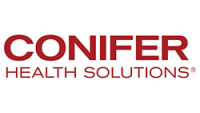Optimize the cost effectiveness of health through prioritizing the patient experience
Persistent pandemic conditions are forcing hospitals and health systems to stretch their thinking as they set strategic goals. They are adjusting to managing fluctuating levels of care along with addressing shifts in payer mix, consumers’ demands, and increasing cost pressures. Halfway through 2022, hospitals were still operating on cumulatively negative margins at -0.09% according to Kaufman Hall’s National Hospital Flash Report: July 2022.
These challenges, combined with inconsistent patient volumes, are putting unprecedented financial pressures on health leaders to reduce operating costs and improve margins while increasing patient satisfaction. It is clear there is a critical need for changes in hospital and health systems’ cost structure and operating performance, as well as a need for new sources of revenue.
Moderator: What steps have you taken to optimize your revenue cycle?
Terri Meier: As an SBO [single billing office], we’re really in tune with our electronic health record (EHR) and take full advantage of its functionality to optimize our revenue cycle. We also involve our team in decisions involving their workflow. When we aim to optimize a process, we look at it through a Lean lens to ensure there’s value in every step.Team members can tell me what functionality is needed and how to implement it for the patient’s benefit as well as their own.
Jon Neikirk: For Froedtert, recent optimization has come from automation to reduce costs in the revenue cycle. With a patient portal adoption rate now of 67%, we want to take full advantage of our EHR and its native applications to optimize workflow, improve the patient experience and reduce expense wherever we can. One of our big wins recently was turning on our EHR’s automated coding capabilities, which we’re able to use for 80% of simple, high-volume outpatient visits. We’re now saving more than $1 million per year in coding expenses by reducing related labor costs.
Mike Simms: Optimizing the EHR is key to revenue cycle optimization. Currently, we use a third party for our statements and payment portal, so they’re not integrated into the patient portal. We see the value, functionality and potential benefits of using applications that are native to our EHR and are working on that. We’re also looking at ways to leverage artificial intelligence through a third party with a direct connection to the payers to help automate authorizations and reduce the amount of time staff have to spend on the phone.
Randy Gabel: We’re also taking full advantage of our EHR, looking at its native applications and functionality to see what it can do and consolidating our vendors where we can. This includes patient-facing applications that enhance the patient experience through smoother and quicker interactions while minimizing touches with staff.
Connie Perez: We started by building out a set of management reports with key revenue cycle metrics, which we use in a regular cadence every day, week and month to guide and drive our actions. On the backend, we’re working with a very dated system. We’ve implemented a third-party solution to help us prioritize our accounts based on cash yield and present a more intuitive interface for our follow-up teams.
Our big initiative this year has been looking at how every decision we make affects patients and families. We’re in the process of revisiting our policies and practices with the patient experience in mind. We created the “director of family finance” role specifically to drive this effort across the whole revenue cycle.
Moderator: How have you used technology to enhance patient financial experience?
Gabel: We’re using technology in several ways to enhance the patient financial experience. First, we’re meeting the patient where they want, making it as easy as possible for them to pay their out-of-pocket expenses – whether on a computer or their phone – while driving them to cost-effective solutions like the payment portal.
We’ve also taken steps to move away from paper statements, which everyone knows are expensive. For patients with portal accounts, we automatically opted out of paper statements unless they manually selected it as an option. We found that most patients don’t want paper statements. At the start of the pandemic, we steered as many patients as possible to the patient portal. Now, our adoption rate is at 60%, so eliminating paper statements for these patients has been an effective way to save money while enhancing the patient experience.
We’re leveraging more technology at the front end, too. We just implemented insurance card readers, which populates information for patients in the EHR, checks for eligibility and defines coverage. In the first month that we were live, we’ve seen reductions in technical denials due to inaccurate information. We use e-check-in and [e-]registration to automate these steps. Right now, we’re at about 20% utilization, though we’re finding that staff and/or patients aren’t trusting the process and still interact to verify information. We’ve also integrated many forms, such as HIPAA and Consent to Treat, into one electronic document that can be emailed and stored in the EHR. This has made check-in much smoother and more convenient.
Sarah Lucas: Like OhioHealth, we’re using technology for registration and e-check-in. We’re in the middle of an initiative to allow patients to self-serve registration, check-in, arrival and even co-payments … all from their phones. Clinics will no longer need to provide paper to every patient, just those who would prefer the paper process or who need assistance. The culture change will be significant, so we have planned a full year for the transition.
Meier: At UC San Diego, patients can pay through the patient portal, or they can call and pay through our interactive voice response service any time. Both have real-time integration with the EHR, so they work well. They can also request help and obtain financing. The same tools also provide machine learning and allow us to look at propensity to pay and, based on their payment history, suggest payment plans. For any overpayments, we are in the process of partnering with a third party to refund our patients digitally.
Simms: Our patient portal has been successful in automating payments because it’s easily accessible, self-serve, user-friendly and gives the patient options. Through the portal, patients can pay in full or schedule a payment plan up to 12 months. If they can’t pay off their bill within 12 months, they can transition to our external financing program. It also helps our customer service team focus on more complicated cases that require human intervention.
Our strategy is going to be to push patient financing upfront whenever possible, which our pre-service department is working on. For example, with obstetrics patients, there’s plenty of time to give them an estimate and ask them to pay over time, so it’s paid in full at the time of delivery. In some cases, we also ask for deposits at the time of service.
We’re finding it challenging to get billing disclosure notices to patients as required by the No Surprises Act and will be relying on technology to facilitate this.
Perez: Working with our older system, our internal development team has created solutions to make it easier for patients to sign documents and make payments. We’ve built a text-to-pay tool, and we’ve also built a system where documents, such as registration forms, can be sent to families and returned via text.
Sheldon Pink: Patient engagement is essential, but it’s expensive. The American healthcare system wasn’t built around engagement and customer service like other industries, so this is a challenge for us. However, we must start making these investments now and in the future. We have to find solutions to engage our patients. Even if we don’t have all the functionality other solutions might offer, we’ve found it’s more cost-effective to optimize our EHR and its native applications to engage patients than to apply several bolt-on solutions.
Moderator: How do you balance the need for happier patients, more productive staff and more engaged and satisfied physicians with the need to contain costs?
David Lee: At UCSF Health, our strategy has been to expand our footprint across the San Francisco Bay Area. We’ve added hundreds of clinics in the last five years. Patients often encountered problems with the front access person, which was really hurting patient satisfaction. Our solution was to centralize patient access, including all our resources from PFS [patient financial services], contracting and case management. So now all the clinics across the Bay Area have less burden and can focus on patient care while our centralized access team focuses on pre-authorizations, customer service and collections. This change has increased patient satisfaction and made the physicians happier, too, while also saving expenses.
Pink: As a health system, you have to understand what you can afford first and then educate your patients to culturally change their expectations and behavior, because you’re not going to be able to meet everyone where they are. For instance, there will always be patients who prefer paper statements. If you only have a budget for digital, you shouldn’t be sending paper. You have to change their expectations and behavior. You have to educate them. While that culture shift won’t happen overnight, they will eventually get used to it and understand that’s how you do business.
Meier: As far as staff are concerned, we find balance by involving our teams with workflows, technology and the vetting processes. This way, at least the team is involved so our workflows, processes and tools are built by them – and then they own them.
The easily accessible self-service tools are so important, because it frees our highly trained staff to focus on the cases that require human intervention, talking to and educating patients, so they understand the next time, too.
Simms: There’s a misconception that hospitals are making a ton of money, but we’re not. Non-profit and small rural hospitals, in particular, are struggling. Patients and communities need to understand this and be educated on their health plans, so they understand how their behavior impacts healthcare organizations. What would help in this pursuit in the future is if patients could see their online statements right next to their health plan’s explanation of benefits, so they can match up their deductible and co-insurance to what’s being billed. They don’t always believe us, so this would help them understand their financial responsibility.
Perez: I agree. Giving patients information so they can understand their bills will be key to improving the patient’s financial experience. They don’t want to know just what they owe; they want to be given a breakdown and specifically see why they have to pay what we’re asking them to pay.
Moderator: What are your top cost-reduction strategies that you are pursuing?
Lucas: Automation. We’re automating everything that we can. While it’s not a silver bullet, there are a lot of things that can be automated using our EHR and RPM tools. It is a big cost savings that enables us to reserve the people interactions for our patients.
We’ve also changed our staffing model to reduce costs. We assume that no staff member will be in a single role for more than three or four years. We work with staff to learn about their career goals and help them advance internally. Being intentional about this helps us reduce turnover costs and overcome resistance to change.
Gabel: We’re focusing on automation as well. We’re also looking at ways to prevent human errors to reduce denials. We have a lot of turnover in patient access, and we’re finding that the same mistakes are being made, resulting in denials. We perform root cause analysis to identify the pain points and address those issues. We’re also targeting authorizations, working with our payers and providing scorecards to identify reasons why claims are getting denied, which most often end up getting overturned. The appeals process costs us both a lot to go back and forth. We’re trying to be more collaborative with our payers to save these unnecessary costs.
Pink: Automation is good, but you must have strong IT support. If you don’t already have that talent, your costs will shift. So, you’re not going to be saving much. So, we’ve been focusing on workflow optimization, looking at different revenue cycle steps and identifying extra efforts to reduce waste.
Conclusion: While operating margins are beginning to rebound, hospitals and health systems must find ways to improve the cost effectiveness of health as they face a myriad of challenges. Prioritizing the patient experience is key to reducing costs. The roundtable executives agree that optimizing the EHR through its native applications and other solutions is critical for patient engagement – whether clinical or financial. They agree that identifying and reducing waste points within the revenue cycle is another important strategy for minimizing costs. They also agree that automating routine and repetitive processes is a valuable strategy, allowing staff to focus on more complicated cases, which is important from a satisfaction vantage as well as a financial one.
Panelists
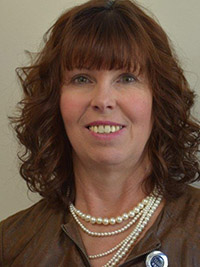
Terri Meier, system director for patient revenue cycle, UC San Diego Health, San Diego, Calif.
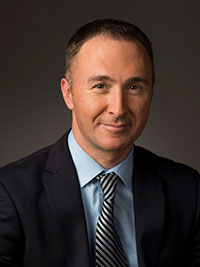
Jon Neikirk, executive vice president of revenue cycle, Froedtert Health, Milwaukee, Wisc.
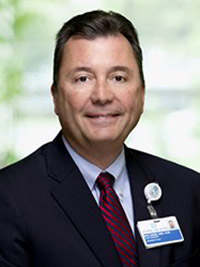
Mike Simms, vice president of revenue cycle, Cone Health, Greensboro, N.C.
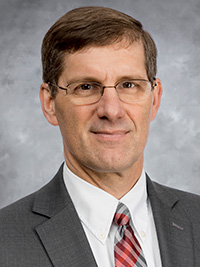
Randy Gabel, senior director, revenue cycle, OhioHealth, Dublin, Ohio.
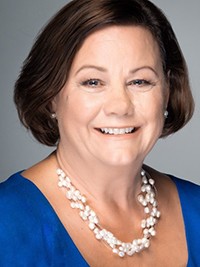
Connie Perez, vice president, revenue cycle, Phoenix Children’s Hospital, Phoenix, Ariz.
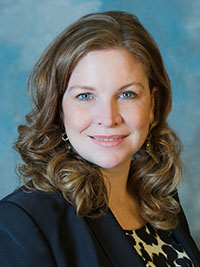
Sarah Lucas, associate vice president of revenue cycle, UW Medicine, Seattle, Wash.
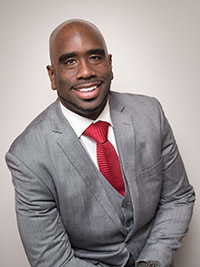
Sheldon Pink, vice president, revenue cycle, Luminis Health, Annapolis, Md.
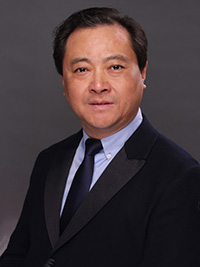
David Lee, controller, UCSF Health, San Francisco, Calif.
Moderator:

Katie Gilfillan,director, healthcare finance policy, physician and clinical practice, HFMA, Downers Grove, Ill.
About Conifer Health Solution
Conifer Health Solutions, LLC, brings more than three decades of healthcare industry expertise to help health systems, hospitals, physician groups, employers and unions address their most pressing business challenges. The company offers technology-enabled revenue cycle and value-based care performance solutions that enhance the patient experience, drive operational efficiency, optimize financial performance and improve clinical outcomes. For more information, visit ConiferHealth.com.
This published piece is provided solely for informational purposes. HFMA does not endorse the published material or warrant or guarantee its accuracy. The statements and opinions by participants are those of the participants and not those of HFMA. References to commercial manufacturers, vendors, products, or services that may appear do not constitute endorsements by HFMA.






